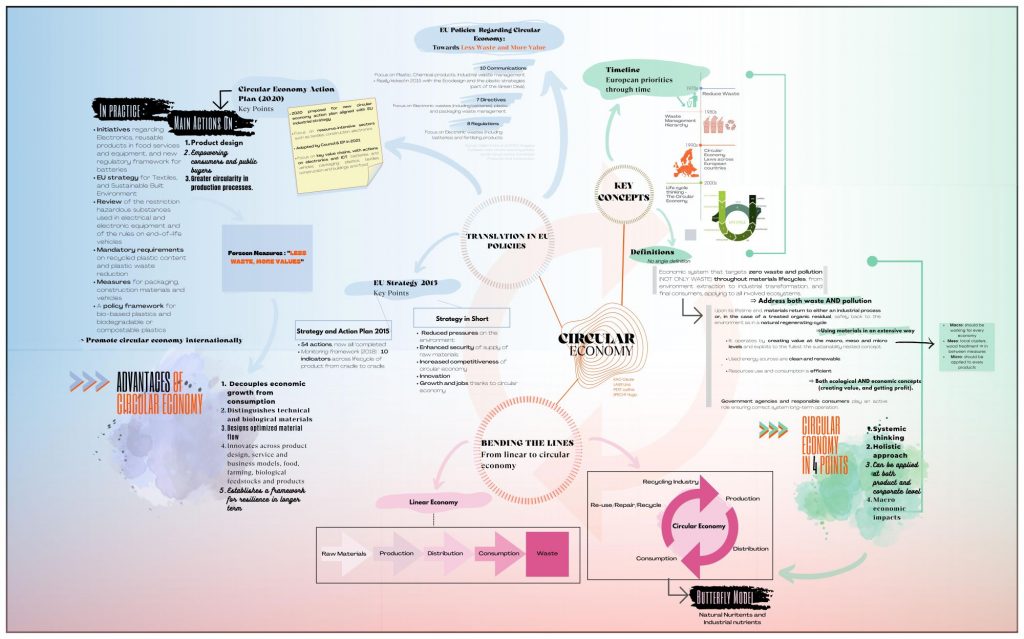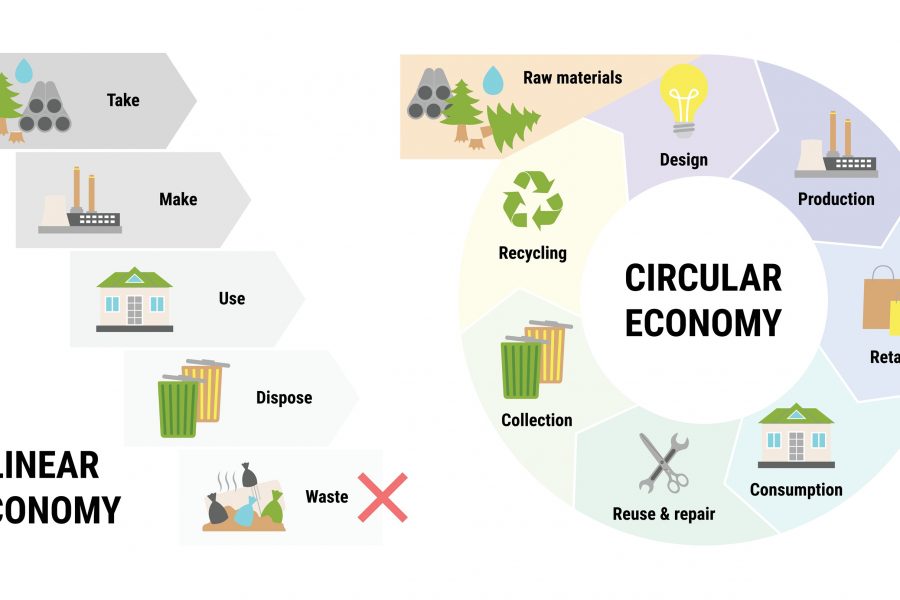
Energy Poverty
7 November 2022
Sustainable Mobility
7 November 2022By Cécile Kao, Lina Laur, Justine Petit, Hugo Specht
“World waste is to grow by 70 percent by 2050 and urgent action must be taken” according to the World Bank. In the context of a worldwide environmental crisis, urgent actions must be taken and structural change is needed. Circular economy seems now a key alternative to our linear economy.
“Less waste, more values”, Circular Economy is a key concept towards sustainability. It tackles every step of a product’s life from conception and making to disposal and recycling.
As international leader and one of the world’s biggest markets, the European Union has decided to take action. Along with other climate and energy policies, the circular economy is one of the crucial aspects of the European Green Deal. It aims at optimizing our resources by making our products more resilient and efficient while empowering governments and consumers.
Action is urgent. However, the concept of circular economy has been well known for decades. It started with a simple premise in the EU with the first policies aiming to reduce waste in the 1970s. Over the years, the European Union has developed several policies that aim to achieve the goal of the circular economy, to reach zero waste and pollution. In 2015, the circular economy project was born.
The European Green Deal marks a new and fundamental step towards creating a more environmentally-friendly and carbon neutral economy within the EU. This mind map aims to illustrate three main ideas of the circular economy in the European Union from its definition to its current and future implementation.



